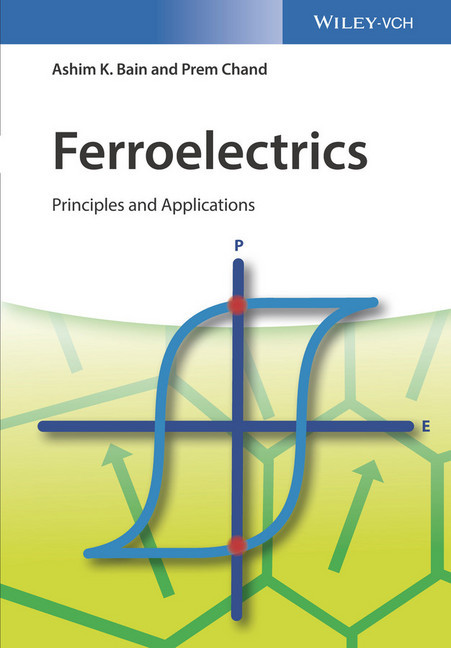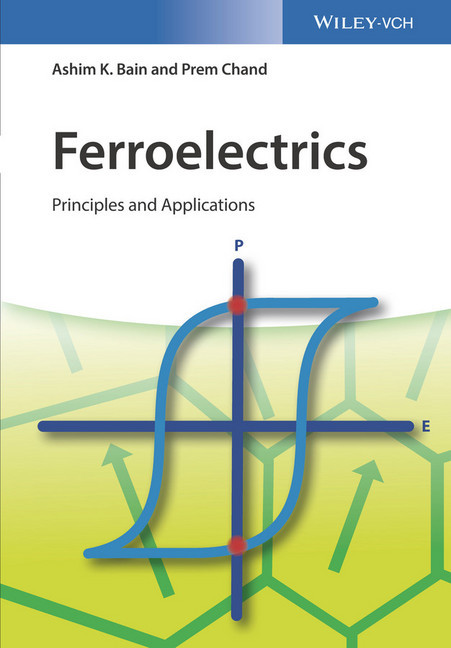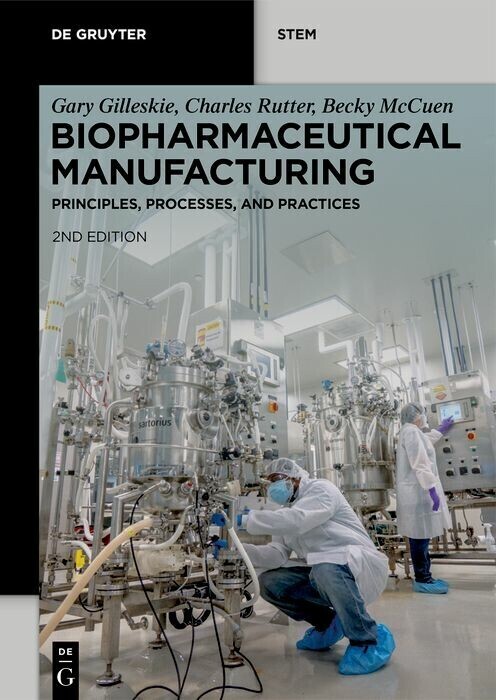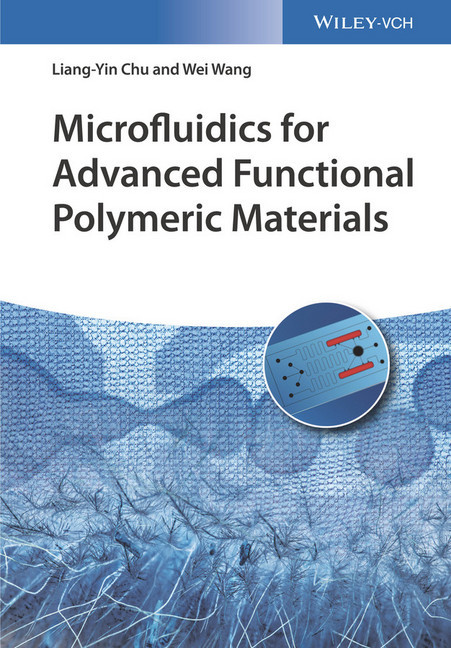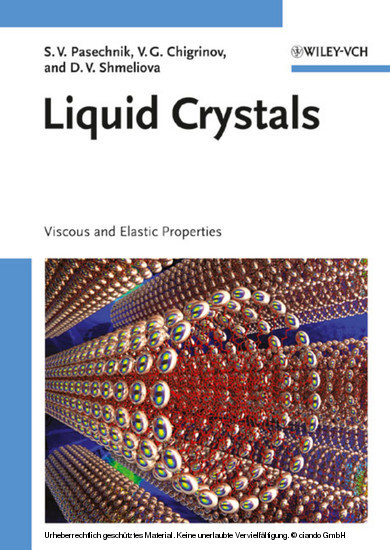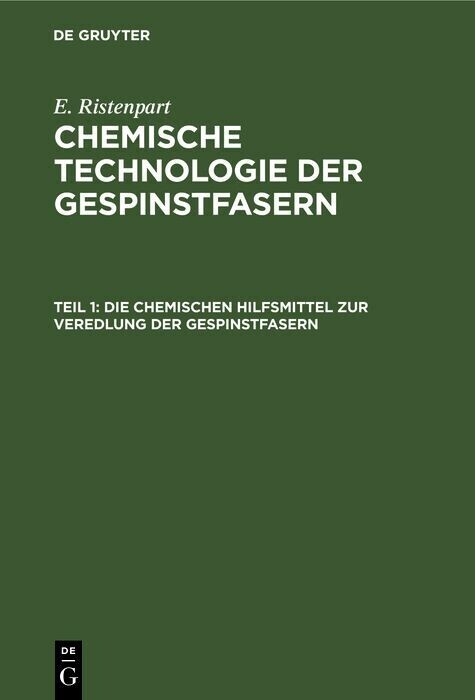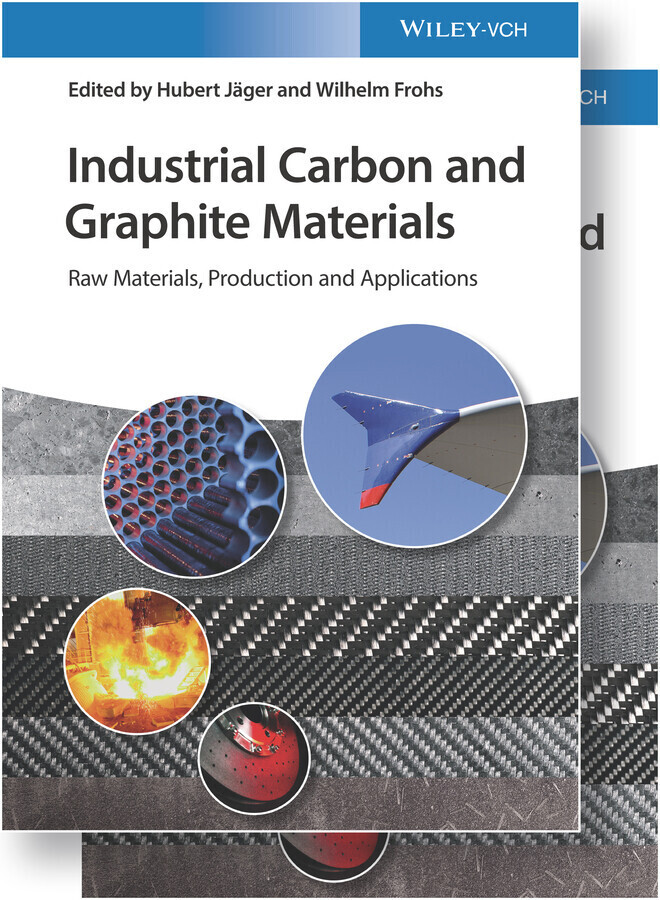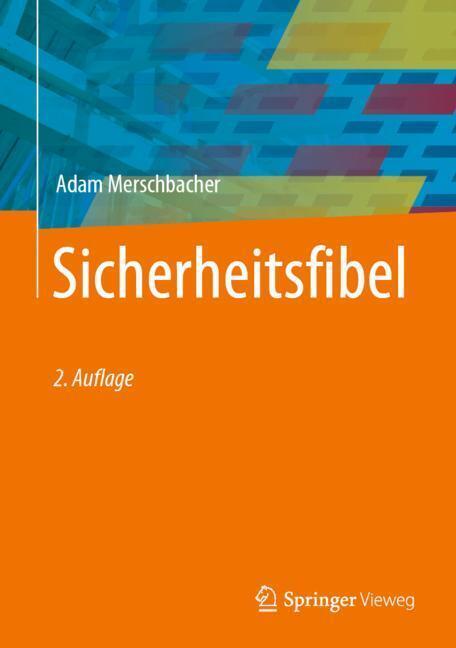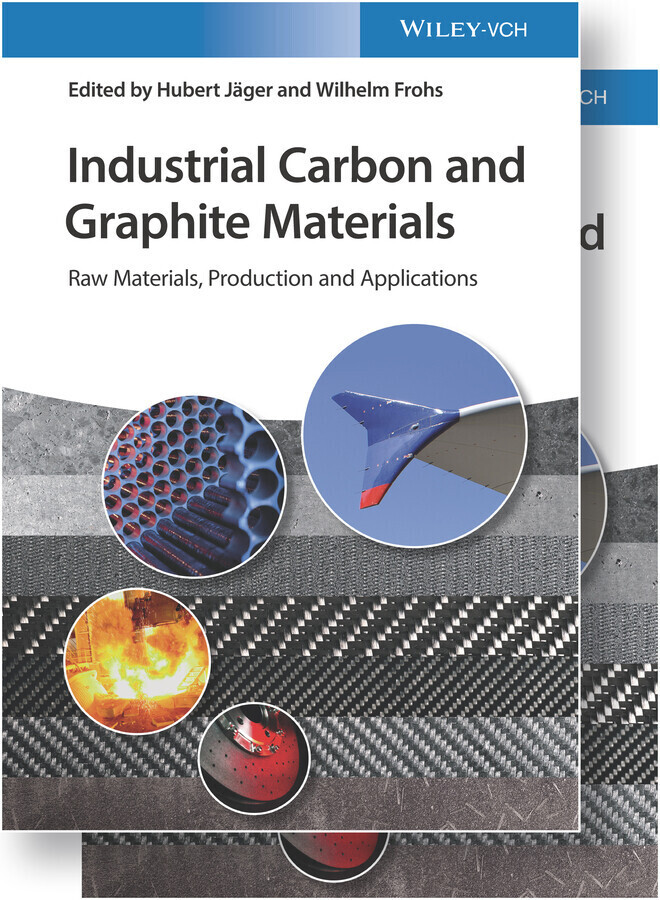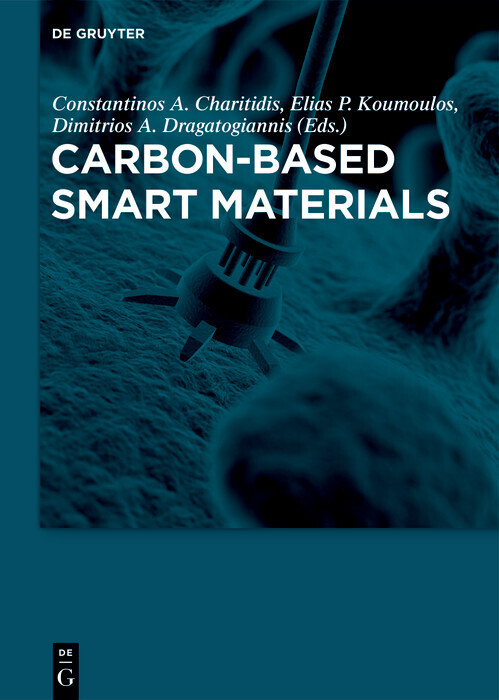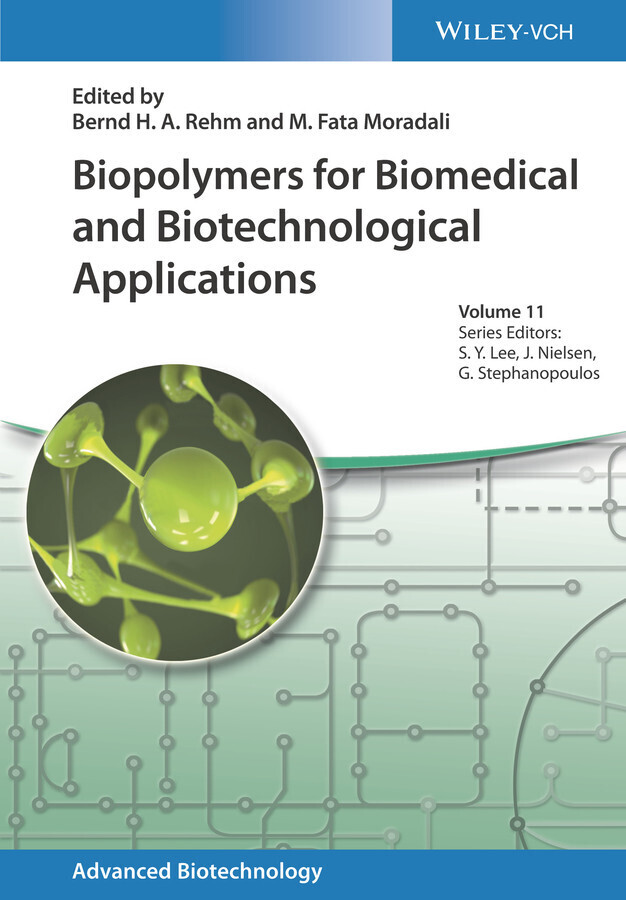Ferroelectrics
Principles and Applications
Combining both fundamental principles and real-life applications in a single volume, this book discusses the latest research results in ferroelectrics, including many new ferroelectric materials for the latest technologies, such as capacitors, transducers and memories.
The first two chapters introduce dielectrics and microscopic materials properties, while the following chapter discusses pyroelectricity and piezoelectricity. The larger part of the text is devoted to ferroelectricity and ferroelectric ceramics, with not only their fundamentals but also applications discussed. The book concludes with a look at the future for laser printed materials and applications.
With over 600 references to recent publications on piezoelectric and ferroelectric materials, this is an invaluable reference for physicists, materials scientists and engineers.
Dr. Ashim Kumar Bain received his M.Sc. (Physics) degree in 1989 from Rajshahi University, Bangladesh, and his Ph.D. (Materials Science) degree from Dniepropetrovsk State University, Ukraine, in 1994. He was a postdoctoral research fellow (1995-1998) at the Indian Institute of Technology Kanpur, India. He worked as a lecturer (1998-2000) at the IUBAT-International University of Business Agriculture and Technology, Dhaka, Bangladesh, and as a senior scientific officer (2000-2002) at the BCSIR, Dhaka, Bangladesh. Ashim Bain also worked as a visiting research fellow at the University of Birmingham, UK, from June 2002 to December 2002 under the Royal Society (UK) fellowship scheme. Presently he has been working as a freelance Physicist in Birmingham, UK. He has published 15 articles and two book chapters.
Prem Chand has a master's degree in physics and obtained his PhD degree from the Indian Institute of Technology in Kanpur, India. After working at Indian Institute of Technology, Kanpur, India for almost thirty years he reached the highest position of Chief Scientist. Later he has served as director of an engineering college at Delhi-NCR-Sonepat, Haryana, India. Currently, he is serving as professor & head of physics in Sri Ramaswamy Memorial (S R M) University in Delhi-NCR-Sonepat, Haryana, India. Prof. Chand has authored more than hundred scientific publications several review articles and two invited book chapters on ferroelectrics.
The first two chapters introduce dielectrics and microscopic materials properties, while the following chapter discusses pyroelectricity and piezoelectricity. The larger part of the text is devoted to ferroelectricity and ferroelectric ceramics, with not only their fundamentals but also applications discussed. The book concludes with a look at the future for laser printed materials and applications.
With over 600 references to recent publications on piezoelectric and ferroelectric materials, this is an invaluable reference for physicists, materials scientists and engineers.
Dr. Ashim Kumar Bain received his M.Sc. (Physics) degree in 1989 from Rajshahi University, Bangladesh, and his Ph.D. (Materials Science) degree from Dniepropetrovsk State University, Ukraine, in 1994. He was a postdoctoral research fellow (1995-1998) at the Indian Institute of Technology Kanpur, India. He worked as a lecturer (1998-2000) at the IUBAT-International University of Business Agriculture and Technology, Dhaka, Bangladesh, and as a senior scientific officer (2000-2002) at the BCSIR, Dhaka, Bangladesh. Ashim Bain also worked as a visiting research fellow at the University of Birmingham, UK, from June 2002 to December 2002 under the Royal Society (UK) fellowship scheme. Presently he has been working as a freelance Physicist in Birmingham, UK. He has published 15 articles and two book chapters.
Prem Chand has a master's degree in physics and obtained his PhD degree from the Indian Institute of Technology in Kanpur, India. After working at Indian Institute of Technology, Kanpur, India for almost thirty years he reached the highest position of Chief Scientist. Later he has served as director of an engineering college at Delhi-NCR-Sonepat, Haryana, India. Currently, he is serving as professor & head of physics in Sri Ramaswamy Memorial (S R M) University in Delhi-NCR-Sonepat, Haryana, India. Prof. Chand has authored more than hundred scientific publications several review articles and two invited book chapters on ferroelectrics.
1;Cover;1 2;Title Page;5 3;Copyright;6 4;Contents;7 5;Chapter 1 Dielectric Properties of Materials;11 5.1;1.1 Energy Band in Crystals;11 5.2;1.2 Conductor, Insulator, and Semiconductor;13 5.2.1;1.2.1 Conductors;14 5.2.2;1.2.2 Insulators;14 5.2.3;1.2.3 Semiconductors;14 5.3;1.3 Fermi-Dirac Distribution Function;15 5.4;1.4 Dielectrics;16 5.4.1;1.4.1 Polarization of Dielectrics;17 5.4.2;1.4.2 Dispersion of Dielectric Polarization;18 5.4.3;1.4.3 Molecular Theory of Induced Charges in a Dielectric;19 5.4.4;1.4.4 Capacitance of a Parallel Plate Capacitor;20 5.4.5;1.4.5 Local Field in a Dielectric;21 5.4.6;1.4.6 Molecular Description of Polarization;22 5.4.7;1.4.7 Dielectrics Losses;24 5.4.8;1.4.8 Dielectrics Breakdown;27 6;Chapter 2 Microscopic Properties of Materials;29 6.1;2.1 Phonon;29 6.1.1;2.1.1 One-Dimensional Monatomic Chain;29 6.1.2;2.1.2 One-Dimensional Diatomic Chain;31 6.1.3;2.1.3 Phonons in Three-Dimensional Solids;32 6.2;2.2 Phase Transition;33 6.2.1;2.2.1 Soft Mode;35 6.2.2;2.2.2 Landau Phenomenological Theory of Phase Transition;36 6.2.3;2.2.3 Displacive Phase Transition;41 6.2.4;2.2.4 Order- Disorder Phase Transition;42 6.3;References;44 7;Chapter 3 Pyroelectricity and Piezoelectricity;47 7.1;3.1 Introduction;47 7.2;3.2 Pyroelectricity;48 7.2.1;3.2.1 Crystal Classes;48 7.2.2;3.2.2 History;49 7.3;3.3 Piezoelectricity;49 7.3.1;3.3.1 A Brief Historical Survey;51 7.3.2;3.3.2 Piezoelectric Materials;52 7.4;3.4 Applications of Piezoelectric Materials;53 7.4.1;3.4.1 Gas Lighter;53 7.4.2;3.4.2 Piezoelectric Sensors;54 7.4.3;3.4.3 Piezoelectric Actuator;55 7.4.4;3.4.4 Piezoelectric Transformer;57 7.4.5;3.4.5 Accelerometer;59 7.4.6;3.4.6 Piezoelectric Microphone;60 7.4.7;3.4.7 Piezoelectric Micropump;61 7.4.8;3.4.8 Piezoelectric Sound Diaphragm;64 7.4.9;3.4.9 Piezoelectric Solar Cell;66 7.4.10;3.4.10 Piezoelectric Generator;67 7.4.11;3.4.11 Piezoelectric Nanogenerator;69 7.4.12;3.4.12 Piezoelectric Motors;76 7.4.13;3.4.13 Quartz Crystal Microbalance (QCM);79 7.4.14;3.4.14 The Quartz Crystal Oscillator;81 7.5;References;83 8;Chapter 4 Ferroelectricity;89 8.1;4.1 Introduction;89 8.2;4.2 Ferroelectrics;90 8.2.1;4.2.1 History of Ferroelectricity;91 8.2.2;4.2.2 Ferroelectric Phase Transitions;93 8.2.3;4.2.3 Ferroelectric Domains;95 8.2.4;4.2.4 Ferroelectric Domain Wall Motion;96 8.3;4.3 Classification of Ferroelectric Materials;98 8.3.1;4.3.1 Corner-Sharing Oxygen Octahedra;98 8.3.2;4.3.2 Compounds Containing Hydrogen-Bonded Radicals;138 8.3.3;4.3.3 Organic Polymers;142 8.3.4;4.3.5 Electrets;155 8.3.5;4.3.6 Multiferroic Materials;157 8.4;References;171 9;Chapter 5 Ferroelectric Ceramics: Devices and Applications;205 9.1;5.1 Introduction;205 9.2;5.2 Capacitors;206 9.3;5.3 Explosive-to-Electrical Transducers (EETs);211 9.4;5.4 Composites;213 9.5;5.5 Thin Films;213 9.5.1;5.5.1 Piezoelectric Microsensors and Microactuators;214 9.5.2;5.5.2 Polar Films in Microwave Electronics;216 9.5.3;5.5.3 Ferroelectric Thin Films in FRAM;220 9.6;5.6 Alternative Memories Based on Ferroelectric Materials;224 9.6.1;5.6.1 Ferroelectric Field-Effect Transistors (FeFETs);224 9.6.2;5.6.2 Ferroresistive Storage;225 9.6.3;5.6.3 Scanning Probe Microscopy (SPM) for Multiprobe Mass Storage;227 9.7;5.7 Nanoscale Ferroelectrics;229 9.7.1;5.7.1 Nano-ferroelectric Field-Effect Transistor (Nano-FeFET);230 9.7.2;5.7.2 Ferroelectric Nanogenerators;239 9.8;5.8 Electro-optic Devices;243 9.8.1;5.8.1 Electro-optic Modulator;243 9.8.2;5.8.2 Electro-optic Deflectors;247 9.8.3;5.8.3 Electro-optic Tunable Filter;249 9.8.4;5.8.4 Electro-optic Q-Switches;252 9.8.5;5.8.5 Variable Optical Attenuator;253 9.8.6;5.8.6 Polarization Controller (PC);255 9.8.7;5.8.7 Variable Gain Tilt Filters (VGTFs) and Dynamic Gain Flattening Filters (DGFFs);256 9.8.8;5.8.8 Electro-optic Field Sensors;258 9.9;5.9 Photoelastic Devices;264 9.9.1;5.9.1 Photoelastic Modulator;265 9.9.2;5.9.2 Photoelastic Q-Switch;267 9.10;5.10 Photorefractive Devices;270 9.10.1;5.10.1 Photorefractive Waveguides;270 9.10.2;
| ISBN | 9783527805402 |
|---|---|
| Artikelnummer | 9783527805402 |
| Medientyp | E-Book - PDF |
| Copyrightjahr | 2017 |
| Verlag | Wiley-VCH |
| Umfang | 328 Seiten |
| Sprache | Englisch |
| Kopierschutz | Adobe DRM |

